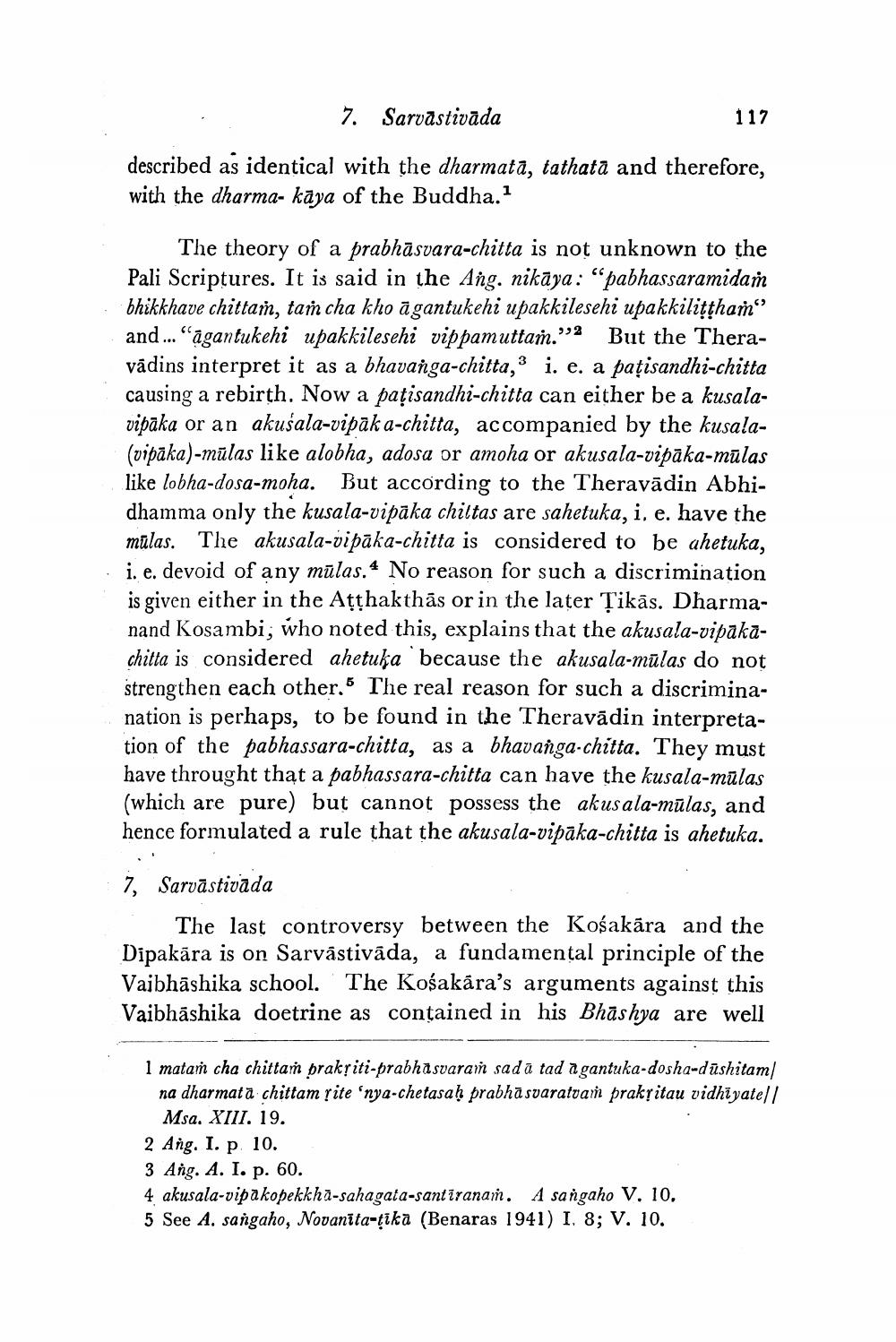________________ 7. Sarvastivada 117 described as identical with the dharmata, tathata and therefore, with the dharma- kaya of the Buddha.1 The theory of a prabhasvara-chitta is not unknown to the Pali Scriptures. It is said in the Ang. nikaya: "pabhassaramidam bhikkhave chittam, tam cha kho a gantukehi upakkilesehi ubakkilittham and..."agantukehi upakkilesehi vippamuttam."2 But the Theravadins interpret it as a bhavanga-chitta, 2 i. e, a patisandhi-chitta causing a rebirth. Now a patisandhi-chitta can either be a kusalavipaka or an akusala-vipak a-chitta, accompanied by the kusala(vipaka)-mulas like alobha, adosa or amoha or akusala-vipaka-mulas like lobha-dosa-moha. But according to the Theravadin Abhidhamma only the kusala-vipaka chiltas are sahetuka, i. e. have the mulas. The akusala-vipaka-chitta is considered to be ahetuka, i. e. devoid of any mulas. No reason for such a discrimination is given either in the Atthakthas or in the later Tikas. Dharmanand Kosambi, who noted this, explains that the akusala-vipakachitta is considered ahetuka because the akusala-mulas do not strengthen each other. The real reason for such a discriminanation is perhaps, to be found in the Theravadin interpretation of the pabhassara-chitta, as a bhavanga-chitta. They must have throught that a pabhassara-chitta can have the kusala-mulas (which are pure) but cannot possess the akus ala-mulas, and hence formulated a rule that the akusala-vipaka-chitta is ahetuka. 7, Sarvastivada The last controversy between the Kosakara and the Dipakara is on Sarvastivada, a fundamental principle of the Vajbhashika school. The Kosakara's arguments against this Vaibhashika doetrine as contained in his Bhashya are well 1 matam cha chittam braksiti-prabha svaram sada tad a gantuka-dosha-dushitam na dharmata chittam tite 'nya-chetasah prabha svaratuan prakritau vidhiyatel/ Msa, XIII. 19. 2 Ang. I. p. 10. 3 Ang. A. I. p. 60. 4 akusala-vipakopekkha-sahagata-santiranam. A sangaho V. 10. 5 See A. sangaho, Novanita-tika (Benaras 1941) I. 8; V. 10.




